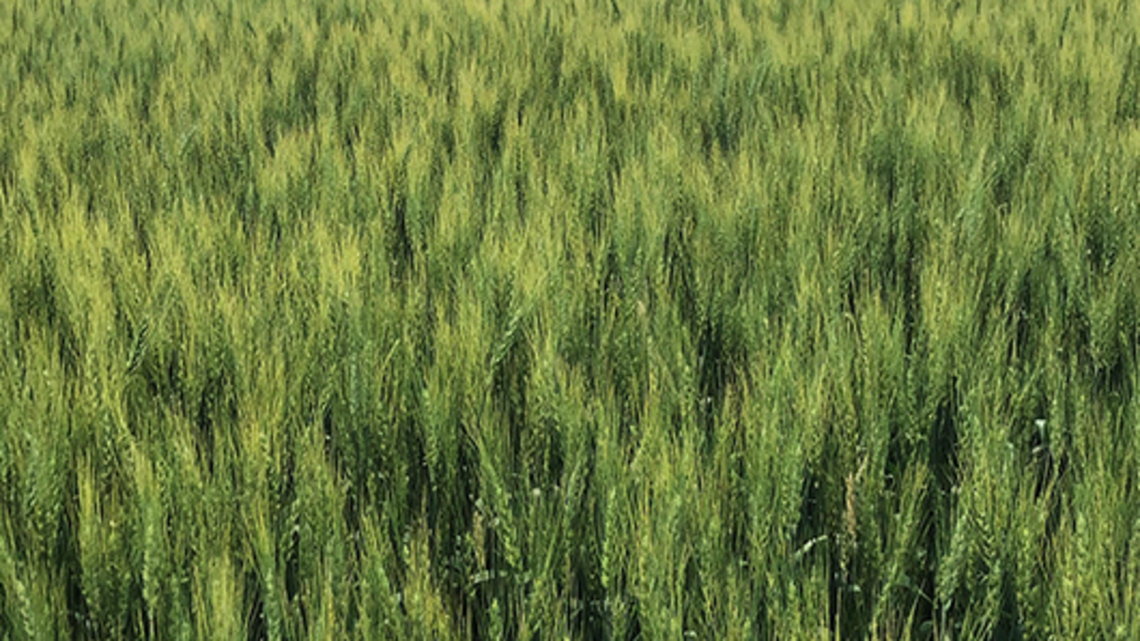Wheat insights from the Northern Plains

Field updates from a BASF Innovation Specialist
A wheat crop looks different depending on where you look at it from. We want growers to continue to be successful not only in their current year, but for the years and obstacles to follow. In order to build upon the triumphs and challenges of the season, we look to the experts who have experienced the highs and lows alongside growers across the nation. Our Innovation Specialists have their fingers on the pulse of everything that happens in the field, from the Northern Plains to the Pacific Northwest. At the end of June, we spoke with Bethany Erickson, an Innovation Specialist that oversees territory in south central North Dakota and northwestern Minnesota, to see if she could share a few highlights from the current season and tips growers can act upon to improve crop inputs for future success.
Grain that gets noticed
Despite the heavy impact of wet weather and delayed planting that hit corn and soybean growers across the nation, wheat growers had something to celebrate in the cooler temperatures and rain that came in May and early June. Bethany Erickson, a BASF Innovation Specialist that operates from North Dakota, said, “We've been pretty cool lately and we've gotten some rain, and so wheat is looking phenomenal. I would say it’s the best-looking crop we have in my area.”
This year’s great crop is due in part to the attention to detail growers in the area are paying to nutrient management. Depending on the area, some farmers are utilizing variable rates when applying fertilizer. By looking for high-yielding areas, and applying more fertilizer, growers in the region have been proven to be more productive.
“I have growers that are utilizing Environmentally Smart Nitrogen (ESN) within an encapsulated nitrogen. Last year, we saw benefits with that nitrogen releasing at flag leaf timing, which is critical for that plant to get at that stage.”
Productivity with varieties and fungicides
Erickson reported that growers are also going in with more productive varieties. Growers have been more conscientious about the great return of fungicides with specific varieties that they’re placing on their fields.
Depending on the operation and variety used, Erickson has conducted trials and encouraged those growers to use applications at flag leaf timing.
“I had a grower last year that had a yield untreated at flag leaf with 93 bushels, which is amazing, right? He then applied Nexicor™ Xemium® Brand Fungicide at flag leaf and got 102 bushels an acre, and that was pretty awesome. In another area, it was 79 bushels when we looked at untreated. When we looked at it treated, it was 85 bushels. So that was really exciting to see.”
“We have growers that are proactive and more aggressive in really wanting to increase their yields. And they're the ones that say, "You know what? I spend a lot of money on my crop already, and putting in this seed, and I want to make sure that I'm protecting it." So, I know that they're the growers that are saying, "I'm putting down a flag leaf application.""
When making considerations for crop inputs in the coming year, Erickson stresses that switching out modes of action is key. Historically, there have been growers using group fours in wheat, and before they realize it, they may have several applications of group four herbicides happening over multiple crops. In order to preserve that technology for the future and combat potential resistance issues, growers should switch out their mode of action, perhaps using different herbicides like group twenty-seven or a Zidua® SC herbicide, a group fifteen.
As growers finish up a tough season, their sights are already turned to the next. To learn more about how the wheat in your area faired, talk with your BASF representative, or visit GrowSmartWheat.com.
Always read and follow label directions.
Nexicor is a trademark and Xemium and Zidua SC are registered trademarks of BASF. © 2019 BASF Corporation. All rights reserved.
Please feel free to utilize these articles in their current form. For more information, including requests for imagery, quotes, bylined articles or conducting further interviews, contact Taylor Werdel at twerdel@periscope.com.
About BASF’s Agricultural Solutions division
With a rapidly growing population, the world is increasingly dependent on our ability to develop and maintain sustainable agriculture and healthy environments. Working with farmers, agricultural professionals, pest management experts and others, it is our role to help make this possible. That’s why we invest in a strong R&D pipeline and broad portfolio, including seeds and traits, chemical and biological crop protection, soil management, plant health, pest control and digital farming. With expert teams in the lab, field, office and in production, we connect innovative thinking and down-to-earth action to create real world ideas that work – for farmers, society and the planet. In 2018, our division generated sales of €6.2 billion. For more information, please visit www.agriculture.basf.com or any of our social media channels.
About BASF
At BASF, we create chemistry for a sustainable future. We combine economic success with environmental protection and social responsibility. The approximately 122,000 employees in the BASF Group work on contributing to the success of our customers in nearly all sectors and almost every country in the world. Our portfolio is organized into six segments: Chemicals, Materials, Industrial Solutions, Surface Technologies, Nutrition & Care and Agricultural Solutions. BASF generated sales of around €63 billion in 2018. BASF shares are traded on the stock exchange in Frankfurt (BAS) and as American Depositary Receipts (BASFY) in the U.S. Further information at www.basf.com.
